It is only takes 10 seconds to “WOW!” your recruiters to select your CV for your desired job. If the recruiter does not select your CV in this 10 seconds, that means you are making bad resume mistakes like other people do.
You are not alone, even professionals do common mistakes in their resume writing. 76% of resumes are discarded because of these mistakes. If you are thinking what is wrong with your resume, this post is for you.
Check these 31 most common mistakes made on a resume whether you are doing one of these. Avoid them and convert your bad resume to a wining resume.
Table of Contents
29 Common Resume Mistakes and How To Avoid Them?
Most job seekers don’t realize that their resume is often their FIRST and ONLY chance to make an impression. The biggest killer of job applications?
❌Poor formatting and readability.
Here are the most common resume writing mistakes you might making.
❌Typos And Grammatical Errors
You will not obviously want you to put yourself as a don’t care candidate infron of a recruiter. If you don’t carefully work on your typos and grammar in your resume writing, that means you don’t bother your job.
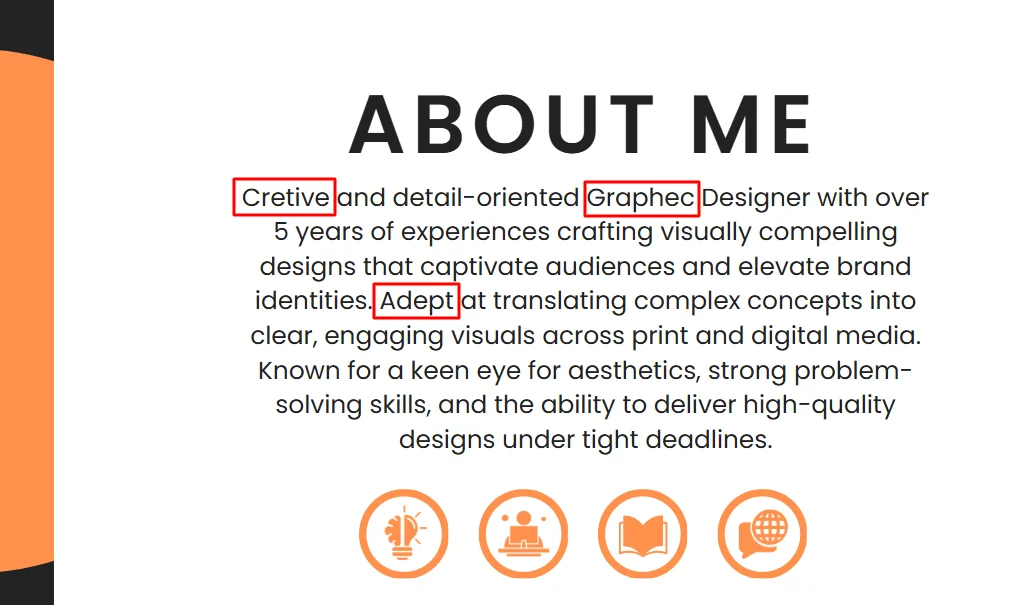
When recruiters notice these types of errors in a resume, they discarded it in first glance and never check the other details.
How To avoid?
While writing resume information, use grammar checkers like Grammerly or turno on the spelling and grammar checker of your editor. Even you write with the grammar checker, must give at leat two revision after you finish your resume writing.
❌Not Using a Resume Builder
Resume builders make creating a resume fast and easy. If you’re still using Word, switching to a resume builder will change your life – we promise!
Imagine spending hours formatting your resume to perfection. You pick the right font, font size, margins, and resume format.
Then, you move a section slightly to the left, and your entire resume layout gets messed up.
How To Avoid?
However, by using a resume builder, you can completely bypass this problem. All you have to do is choose a template you like and fill in the details.
❌Using The Same Generic Resume For Every Job Application
This is one of the biggest and common mistakes job seekers do. We know, making resumes take time and effort, but think like this- if you are sending a generic wish message in christmas, you may not get reply from anyone.
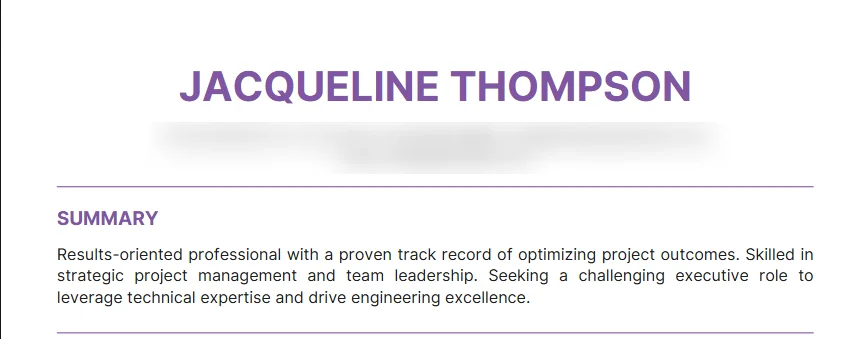
But, if you send personalized wish message to some of your friends, you will must get reply wish. That is the difference between generic content and customized content.
Same thing goes for your job application. When you send the same generic resume to all job applications you will have 3 bad effects:
- Recruiters will take you as a irresponsible and lazy candidate
- You will be behind of other different looking cadidates
- Recruiters will understand that you did not read the job description very well
How To Avoid?
One of the easiest way to make a job-specific tailored resume, to modify your details based on the job specific keywords and required skills.
A good way to save time when creating your resume is to use a general resume that includes all your qualifications. Then, depending on the job you are applying for, you can add or remove content.
❌Focusing on Responsibilities Instead of Achievements
If you were a recruiter, which candidate you will choose? A person who show his achievements or only show what he regularly does? Same goes for your recruiter’s too.
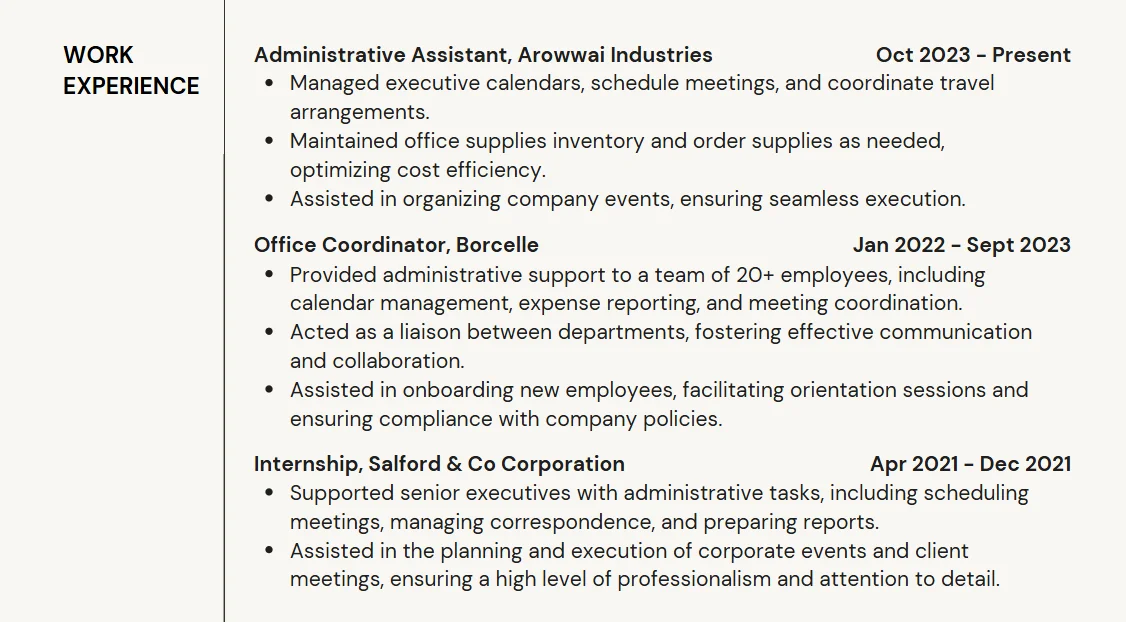
Your recruiters know what are your position’s responsibilities. But, what they don’t know what you achieved in your previous role. So, showing only the responsibilities will not make you an exceptional candidate unless you show your achievements in the previous company.
Here are some examples of bad point:
- Daily conduct group meetings and recorded minutes
- Regularly spending time with children in a day-care setting
- Regularly updating departmental files
These are bad examples. Instead these, show what you achieved, like these:
- Achieved weekly target twice in June, 2025
- Established 2 dedicated playground for pre-school students in two different cities
- Organized all departmental files based on the categories and age from last 5 years
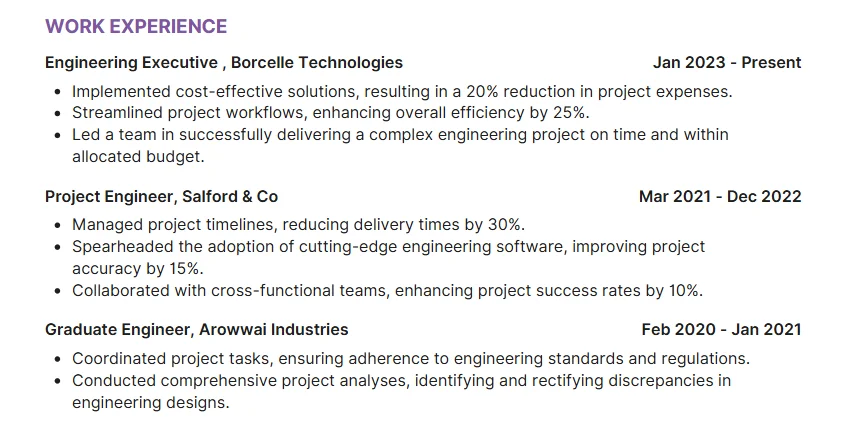
By these, you can show your recruiter your capability and proof of excellence.
How To Avoid?
To beautifully organize this section, ask yourself these 5 questions:
- What difference you made?
- What were the problems or challenges you faced?
- How did you overcome them? What were the results?
- How did the company benefit from your performance?
- Did you receive any awards, special recognitions, or promotions as a result?
Answer these questions in numbers and data, these will show your credibility to the recruiters.
❌Lack of Specific Details And Quantified Data
People trust numbers and data. Recruiters don’t believe in vague statements like “made huge company growth”. They want to see “increase sales 65% in Q2, 2025.” Most of the job seekers make this mistake on their resume.
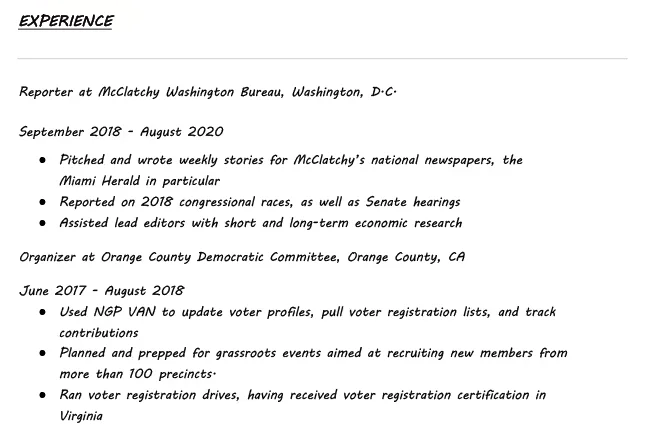
When you keep this kind of lines in your resume, you will be counted as a vague person, not a performer. In fact if your previous company is not data driven, try to provide a number that is approximately nearer. As you did the job, you know what you changed in previous company.
How To Avoid?
Try to provide specific numbers, data, report links or portfolio link to show the proof. Never ever try put any vague jargons or ornamental words.
❌Incorrect or Outdated Contact Information
Assume, you did not make any other mistakes in your resume and the ATS score is 95+, that means you are perfect. But, have not getting any calls. Why? Please check your contact information section.

- Did you put any wrong contact information?
- Did you put any unprofessional email address? (e.g. warriorxxx@gmail.com, dancenaked@gmail.com, etc.)
- Did you put an email address which you are not using anymore?
If you did any of these, that can put your resume in the reject list.
How To Avoid?
You must use a professional looking email address like jane.smith.89 or try to use a domain email of your portfolio website. Also, check whether your email address is active or not.
Also, must check that your phone number is also correct and active. Recruiters often contact through phone number instead email.
Pro tips:
Remember to include all of the following information on your résumé:
- Full legal name
- Full Mailing address
- Home phone number (with area and international codes)
- Cell phone number (with area and international codes)
- E-mail address
- Facebook profile name (Optional)
- Personal website (If any)
❌Making Resume Too Long or Too Short
Expert hiring manager Conrad Benz says, “Hiring managers have a limited amount of time to spend on each application, so we won’t be thrilled to come across a multi-page resume that details every job you’ve ever had.”
Also, a too short resume cannot show your expertise properly to the recruiters. So, a too long or too short resume is big mistake for job seekers.
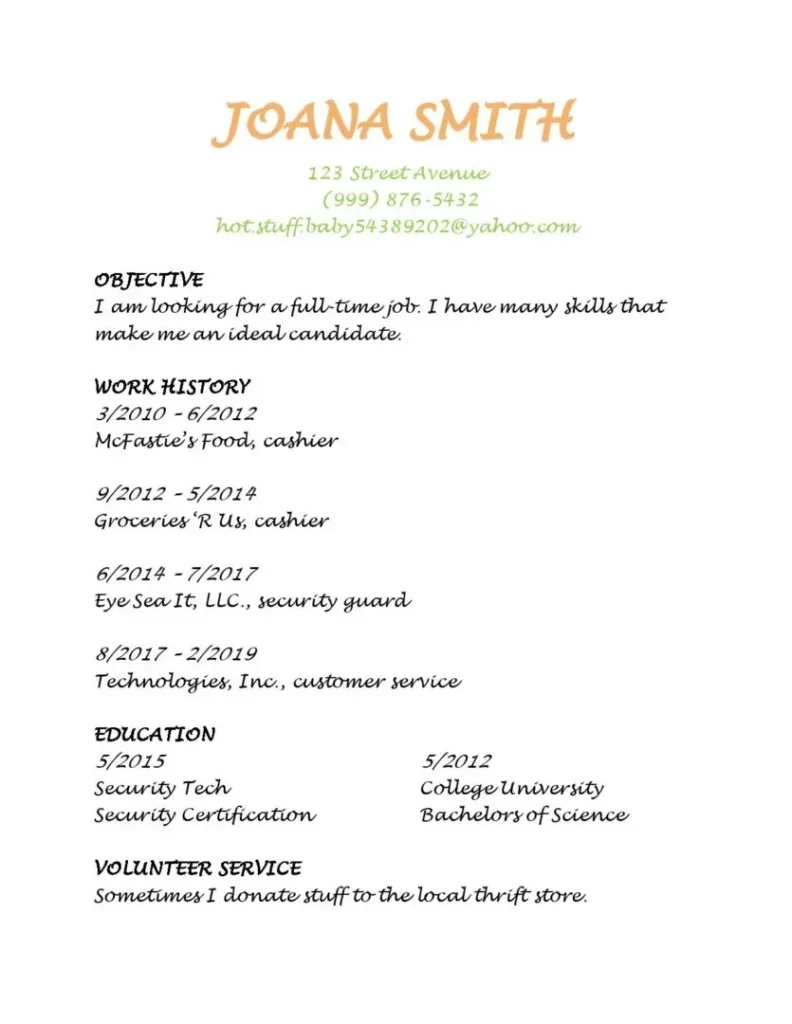
Yes, there are some scenarios where you need to submit a longer resume or if you are a CEO or have 15+ years of experiences.
How To Avoid?
The best way to avoid this mistake is to put only the necessary information that you need to show to your recruiters. Use a industry specific format to properly show your experiences.
❌Poor Formatting And Visual Presentation
Not only should your resume’s content be compelling to employers, but it should also be formatted well. Your resume layout must be professional-looking and easy to read, from the colors you choose to the page margins.
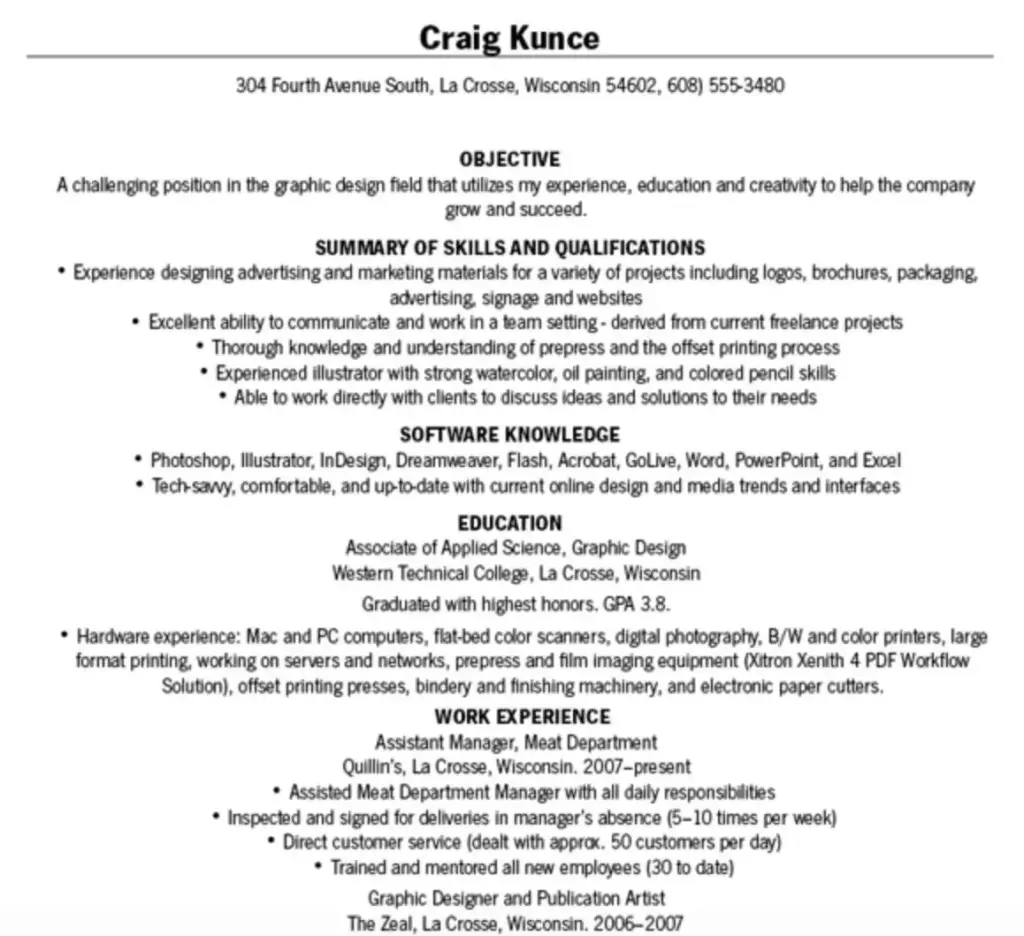
Many employers will be turned off by a resume that is poorly designed or jumbled because it conveys a lack of attention to detail. Your prospects of landing a job can be swiftly destroyed by this.
How To Avoid?
Make sure your CV is organised and easy to follow by using a standard CV format. Also, ensure that all the spacing and design elements (such as horizontal lines and headings) are consistent and look professional.
❌Including Irrelevant Work Experience or Skills
You may be applying for a web developer job though you were a sales manager in last 5 years. You changed your career path after learning web development. So, your previous sales experiences or skills might not be attractive for this job position.
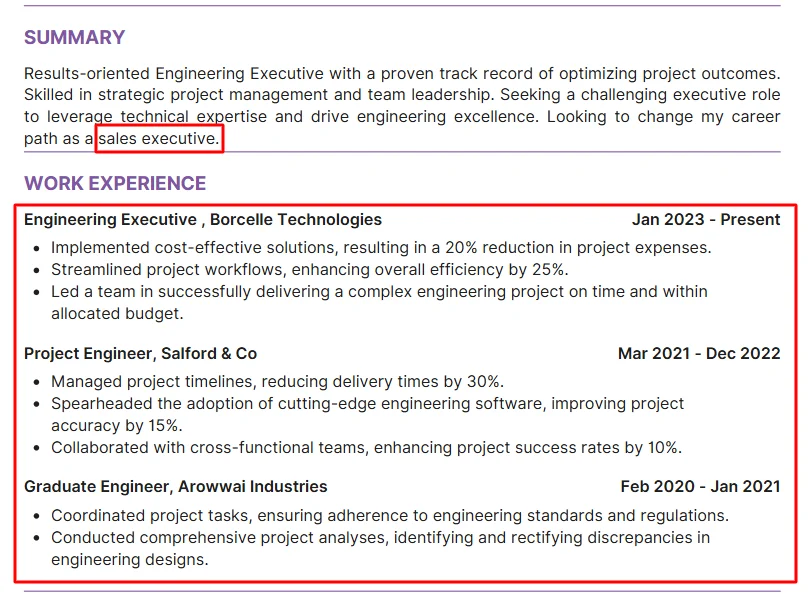
When you add irrelevant work experience or skills in the resume, recruiters may not find the right skill in your resume. That means, though you have right skills, but your mistake placed you in reject list.
How To Avoid?
To ensure that your resume does not include irrelevant skills, it is essential to thoroughly read the job ad.
Please take note of any specific technical skills listed as required or desirable for the position, and highlight your competency in those areas.
Anything else that isn’t relevant to the position should be omitted from your resume.
❌Not Optimizing For Applicant Tracking Systems (ATS)
Now recruiters don’t waste their time to pre-screen the CVs to make a shortlist to call for interview. ATS (Application Tracking System) is doing this job and making a shortlist by matching with the keywords.
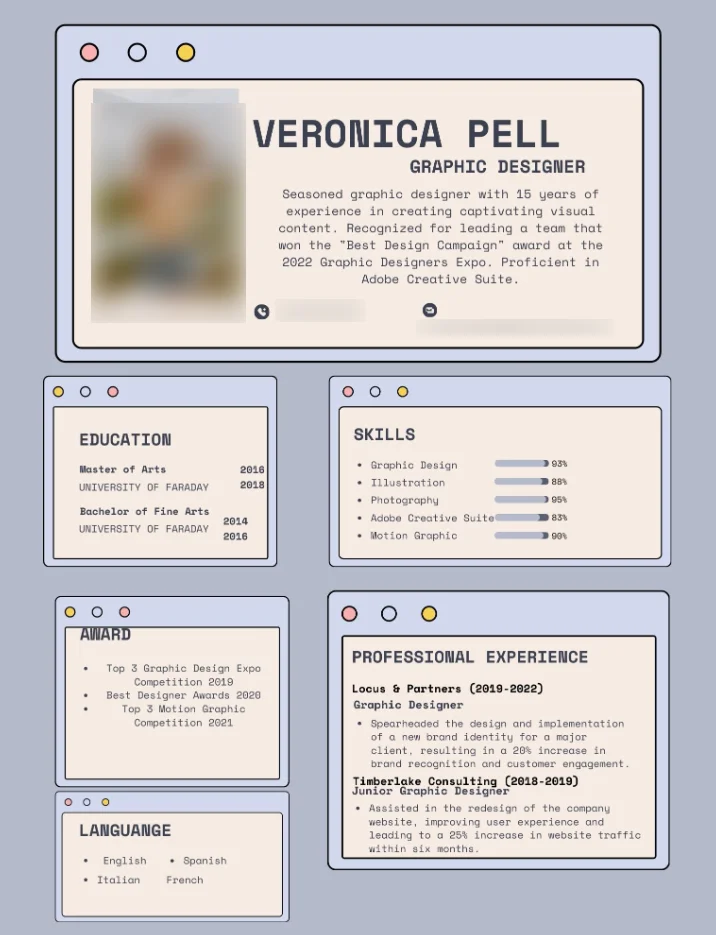
If you are not getting enough calls after applying hundreds of jobs, that might be for ATS-rejection. Your resume is not ATS-friendly and have not optimized to pass the test.
So, to face the interview, the first stage you need to pass the ATS-test, then the hiring manager can see your resume for further process.
Using traditionl resume formats and excluding required keywords make your resume not optimized for ATS.
How To Avoid?
To ensure your CV reaches a hiring manager, make it ATS-friendly by:
- Sending in a Word document
- Choosing a simple CV template.
- Using an easy-to-read font.
- Including job-specific keywords.
- Leave out tables, graphics, or images.
❌Over-Designing With Excessive Graphics or Fonts
If you’re not a fan of the usual resume styles, you might want to check out some creative options that are more visually appealing.
But before you invest all this time and effort into creating a fancy resume, it’s crucial to think about whether it’s really a good fit for your situation.
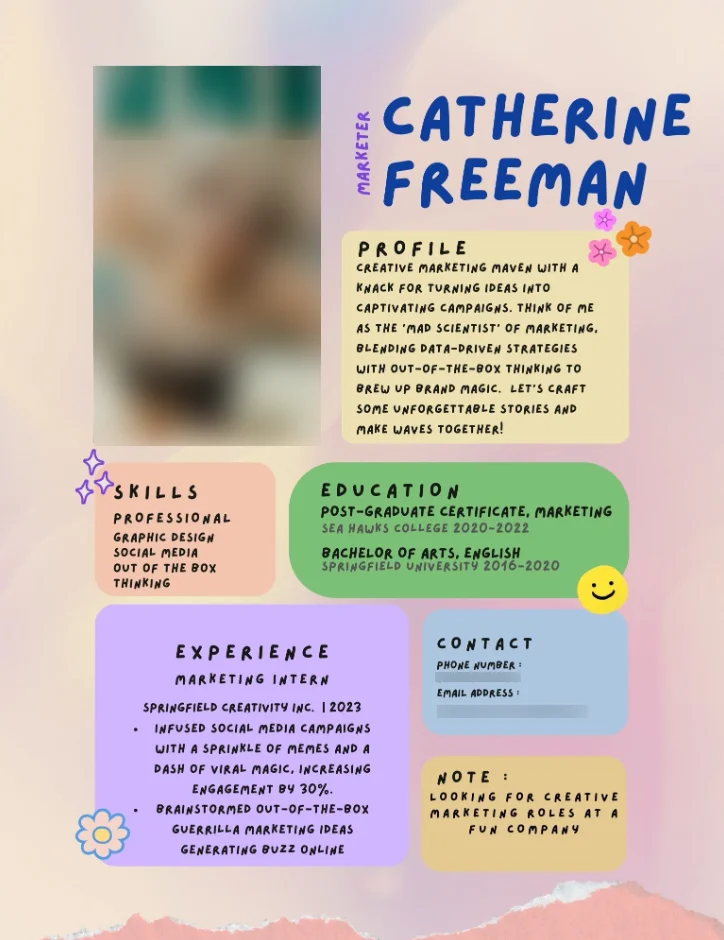
Unless you’re applying for a graphic design job, using a resume with a bold design might come across as unprofessional and hurt your chances of getting an interview.
While the resume design above might be an effective way to show off your design skills, it probably won’t impress employers in most other fields. It’ll probably even come across as childish.
How To Avoid?
Most of the time, it’s a good idea to stick with a simple resume template that’s easy to read and shows off your experience and qualifications.
❌Including Personal Photos
It’s a really common mistake to include a photo on your CV.

It’s easy to see why people make this mistake: including a photo of yourself is expected when applying for jobs in Europe and many other countries, and there are loads of websites that provide picture resume templates designed for non-American job seekers (ours included).
But in the US, including a photo on your CV is seen as unprofessional and can make it less likely you’ll get hired.
Another thing to bear in mind is that adding a photo to your CV could potentially make you more susceptible to employment discrimination based on factors like race, age, gender or appearance.
Some companies even say they won’t look at resumes with photos because they don’t want to get into trouble for discrimination.
How To Avoid?
Just to be on the safe side, it’s probably best not to include a photo of yourself on your CV.
If you’re worried your CV will look too plain without a photo, think about downloading a more creative template that uses interesting colours and details but doesn’t have space for a headshot.
❌Burying Important Information Below The Fold
The top fold is the top one-third of a document. Make sure your CV is laid out so that the most important information is at the top. When you’re writing your CV, don’t bury your best information.
Since they don’t spend much time looking at your résumé, most hiring managers will only look at the top third of the page.
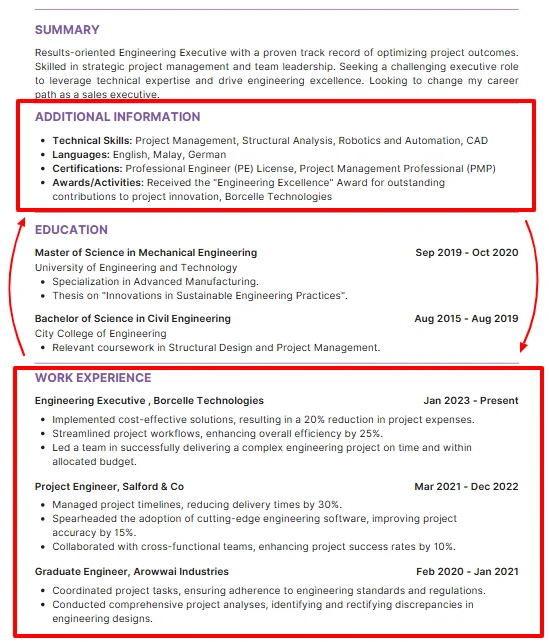
That’s your chance to convince them to keep reading. If they like the top third, they’ll read the rest of your CV. If they like the full résumé, they’ll move you into the “call back” stack.
So, make sure your contact details (phone numbers, email) are at the bottom of your CV, because the hiring manager will only need your details once they’ve decided to contact you. (Obviously, make sure your name is at the top of the list.)
Pro Tips:
What should you place in the top fold?
- Key accomplishments that relate to the position
- Key skills that relate to the position
How To Avoid?
Most résumés list work experience from the most recent job to the oldest. This is the best way to highlight your skills and accomplishments quickly. As you go down the page, you should list the less essential/pertinent information.
Deciding what information is more or less important depends on the exact position you’re aiming for. People who always organize their résumés the same way, no matter what job they’re applying for, are making a résumé writing mistake.
❌Using Weak Or No Action Verbs
Try not to use phrases like “responsible for.” Instead, use action verbs. These words show that you’re an initiative-driven professional, and they’ll make your resume stand out.
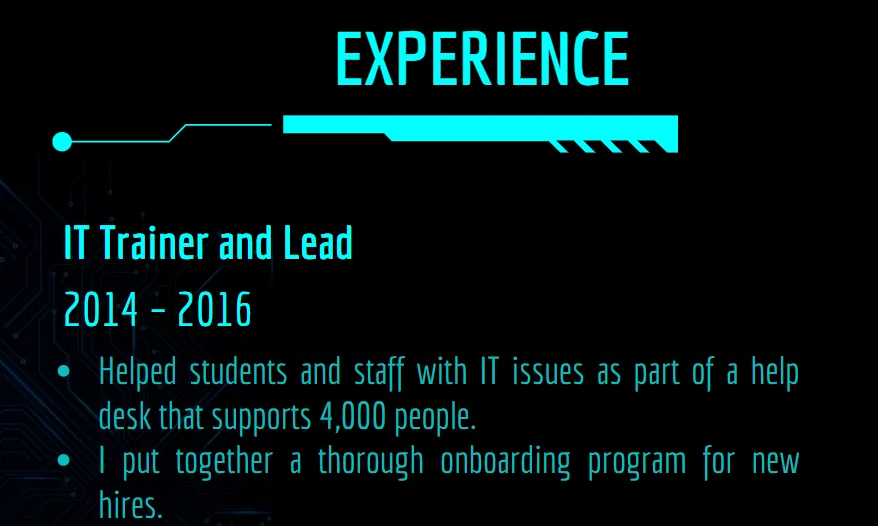
For example:
- Helped students and staff with IT issues as part of a help desk that supports 4,000 people.
- We’ve seen a 20% year-over-year increase in organic search visits.
- I put together a thorough onboarding program for new hires.
How To Avoid?
Avoid using passive language like “responsible for.” Instead, use strong action verbs to showcase your initiative and achievements. This makes your resume more impactful and helps you stand out to recruiters.
❌Writing Vague, Generic Career Objectives
It’s tempting to use fancy words to make this section sound more impressive, but please resist! Sentences like “A driven professional, dedicated to growing a successful career” seem impressive but ultimately mean nothing. Every sentence should have a purpose, or it’s pointless. Hey, you can use this section to share a little bit about yourself, your strengths, and your passions.

How To Avoid?
Sentences should always have a clear purpose. Instead of generic statements, use this space to share specific details about yourself, your key strengths, and what genuinely motivates you.
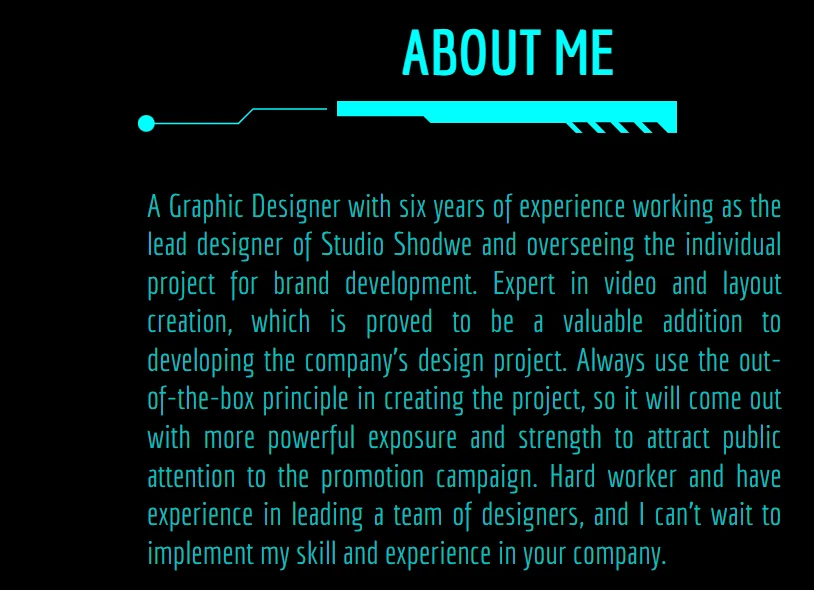
❌Not Backing Up Claims With Supporting Evidence

Consider these two statements:
- “Increased sales.”
- “Increased annual sales by 20% from the year 2019 by completely revamping the sales script.”
The second statement is undeniably more convincing. Why? Because it’s packed with specific details. It allows you to clearly see the applicant’s precise results, understand the methods they employed to achieve them, and grasp the timeframe involved.
When describing any experience on your resume, we strongly recommend providing information on:
- The Results: Quantify your achievements. What measurable impact did you make? Use numbers to illustrate your contributions.
- The How: Explain the actions you took. What specific strategies, initiatives, or tasks did you execute to achieve those results?
- Timeframe: Indicate when these results were achieved. Was it over a quarter, a year, or a specific project duration? Providing a timeline adds crucial context.
How To Avoid?
To ensure your resume highlights your accomplishments effectively and avoids generic statements, follow these tips:

- Think PAR (Problem, Action, Result): Before writing, identify a problem you faced or a goal you had, the specific actions you took to address it, and the quantifiable results of your efforts.
- Use Action Verbs: Start your bullet points with strong action verbs that convey impact (e.g., “Developed,” “Managed,” “Implemented,” “Streamlined,” “Grew”).
- Quantify Everything Possible: Don’t just say you “improved efficiency”; say you “improved efficiency by 15% through the implementation of a new software system.”
❌Including Salary Requirements Or Expectations
It’s good to know your own worth, but don’t put your salary requirements on your resume unless someone specifically asks you to.
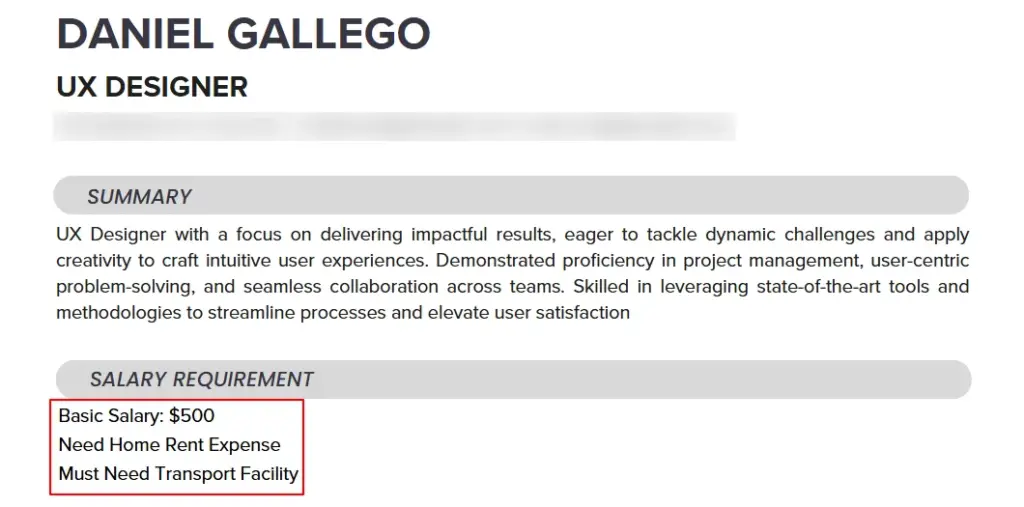
If the first thing hiring managers find out about you is how much money you expect to make, they’ll probably think you’re more focused on the salary than on the actual work you’ll need to do, which leaves a bad impression.
How To Avoid?
When you’re just starting out, it’s all about what you can do for the company, not what the company can do for you. You’ll have a chance to talk about salaries later on, usually after or during the interview process.
❌Listing Obvious or Irrelevant Skills
“Excellent critical thinking skills.”
“Team-player.”
“Organized.”
What do these three skills have in common?
It’s straightforward: almost anyone may claim to have them.
Many job applicants (typically fresh graduates) fill out their resumes with fluff abilities like these in order to “impress” the company or simply make their resume lengthier.

The problem, however, is that you are simply wasting space. Recruiters have seen these talents on resumes so many times that they are no longer concerned by them. So they just skip past them completely.
How To Avoid?
We recommend focusing on hard skills that you can demonstrate with experience, rather than overused soft skills.

❌Not Addressing Employment Gaps
If you have gaps in your employment, you might think it’s a good idea just not to mention them and hope that the recruiter doesn’t catch it.
We’re pretty sure they’ll catch it.
Employment gaps are a major turn-off for recruiters.
While these gaps can be innocent enough (like maternity leave, medical leave, etc.), other times they can mean that the employee is a job hopper or that they got fired for some reason.
And if you don’t mention the gap in your resume, the recruiter is probably going to assume the worst.
How To Avoid?
If you’ve got an employment gap in your resume, try putting something like this in between your work experience entries (or on top of it, if the employment gap is recent):
09/2019 – 06/2020
Had to take some time off from my career, as I got injured in an automobile accident. After surgery, however, I have recovered and am ready to get back to work.
❌Using Buzzwords Without Substance
Using overused words like “go-getter,” “maximizing synergy,” and “self-starter” is a big mistake on your resume.

Your resume should show recruiters that you have special skills and qualities that would make you a good addition to the company. Using vague resume buzzwords makes you appear unoriginal and suggests you’re exaggerating your qualifications.
How To Avoid?
Including action verbs in the work experience section of your CV is a more effective way to demonstrate your qualifications and traits to employers. Using strong action verbs to describe your experience shows employers how you work, eliminating the need for adjectives.
Instead of describing yourself as a ‘team player’, for example, use a bullet point in your work experience section to describe your experience of collaborating with a team, supporting your colleagues, or contributing to a group project.
❌Saving In Wrong File Format
It’s not only important that the content of your CV impresses employers; the formatting needs to look good, too. Everything from the colours you use to the page margins is important, as it’s essential that your CV layout is easy to read and looks professional.
Many employers will immediately reject a disorganised or improperly formatted CV, as it suggests a lack of attention to detail. This can quickly ruin your chances of getting the job.
How To Avoid?
Organize your resume and make it easy to follow by using an established format. Also, ensure that all the spacing and design elements (such as horizontal lines and headings) are consistent and professional-looking.
If you’re having trouble creating a professional-looking resume in Microsoft Word, you can download many free pre-formatted resume templates online.
❌Choosing Unprofessional File Names
When you’re submitting a resume, it’s always a good idea to name it something specific.
[Your First Name]-[Your Last Name]-[Resume]
This makes you look professional and it’s also easier for the recruiter to find your resume in a folder with a bunch of others.
How To Avoid?
Always use a professional and clear file name for your resume. “John-Doe-Resume.pdf,” demonstrates proper naming conventions that are easy for recruiters to identify and organize. In contrast, “ResumeFinalVersion10.pdf,” is generic, unhelpful, and suggests disorganization, potentially creating a negative first impression before the resume is even opened.
❌Including References or “References Available Upon Request”
Most employers will want to see a list of references at some point during the recruitment process.
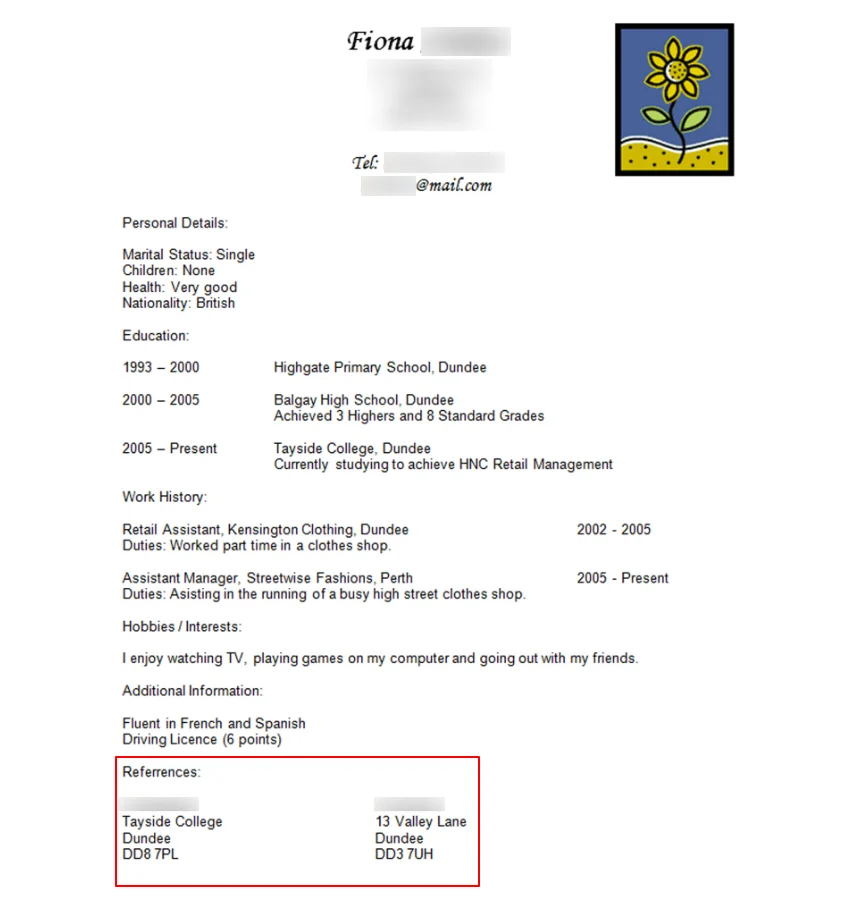
However, contrary to popular belief, you should not list references on your CV. Adding a references section sucks up valuable space that could be used to elaborate on your skills and experience.
Employers usually want to see references later in the hiring process, once they have reviewed your CV and interviewed you. Once you reach this stage, they will simply ask you for a list of references.
How To Avoid?
Rather than listing references on your CV, create a separate document containing your references to send to employers upon request.
❌Disclosing Unnecessary Personal Information
Even though it’s against the law for employers to discriminate based on religion, ethnicity, age, marital status, sexual orientation, or disability, it still happens a lot in the United States.

If you add personal information that isn’t relevant to your qualifications, you might be at risk of being discriminated against due to recruiters’ potential conscious or unconscious biases. So it’s better to not disclose this information at all.
How To Avoid?
Maintain a professional tone in your CV by avoiding any irrelevant information. Employers only need your email address, phone number and name.
❌Exaggerating Abilities or Lying About Qualifications
Putting too much or too little info on your CV is a big no-no.
If employers think you’re lying during the hiring process, they’ll see you as untrustworthy, and it could cost you the job. You can easily find out if they’re lying or exaggerating by chatting with their references, so it’s not worth the risk.
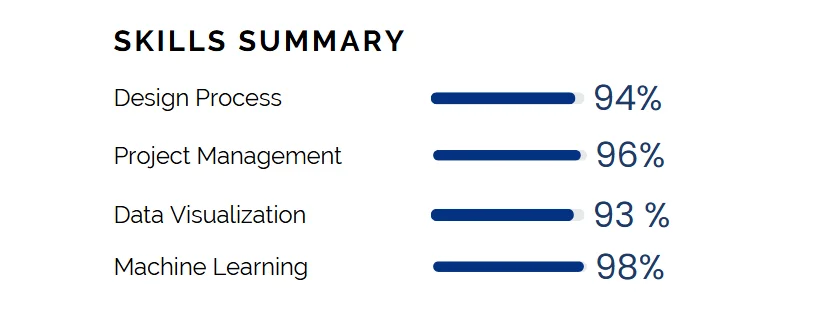
If you’re going to list yourself as an expert on something, you need to be really confident in your abilities.
Even if you manage to get a job after bending the truth about your qualifications, you might still end up falling short of your employer’s expectations because you don’t have the necessary knowledge and skills for the role.
How To Avoid?
It’s always better to be upfront about your skills and experience than to go into a job without the right preparation and end up underperforming. Employers might be willing to give you the training you need to succeed in a role.
❌Not Tailoring Resume To Match Job Description Keywords
It is ineffective to send the same generic resume for every job application because it fails to demonstrate how your skills and experiences align with the position’s requirements.

It may appear that you haven’t taken the time to learn about the requirements of the position or aren’t truly interested in it if your CV doesn’t match the job description.
Your chances of attracting the recruiter’s attention and landing an interview will undoubtedly rise if you customize your resume to highlight pertinent accomplishments, experiences, and abilities.
How To Avoid?
To ensure your resume stands out and effectively communicates your suitability for a role, always customize it for each application. Carefully read the job description and identify key skills, experiences, and keywords. Then, strategically incorporate these into your resume, highlighting relevant achievements and responsibilities that directly align with what the employer is seeking.
❌Using Outdated or Unprofessional Fonts
When creating a CV, it can be tempting to use unique-looking fonts to make it more visually interesting and set yourself apart from other applicants.
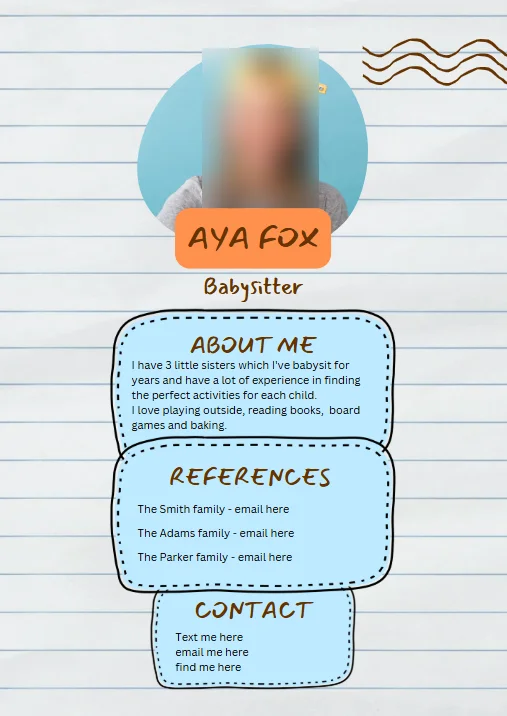
However, many non-traditional fonts are difficult to read and can make your CV look unprofessional, as shown in the example above.
You should avoid decorative fonts such as Courier, Impact, Papyrus and, in particular, Comic Sans. Using any handwritten-style fonts is also a mistake because they are difficult to read.
How To Avoid?
Keep your CV fonts simple and professional. Classic options such as Arial, Georgia and Times New Roman are always a safe choice.
❌Failing To Highlight Relevant Technical Skills
Almost every business needs people who can help them manage and thrive in the new age of online communication, instant access, and overwhelming amounts of information. Put simply, as a younger student or professional, you are likely more familiar with online technology and culture than upper management.
If your résumé does not highlight your computer skills, such as proficiency in office programs, design work, and online research, then you are making a résumé mistake.
How To Avoid?
There are lots of articles out there about creating a web portfolio to supplement your résumé. This is a great idea, but please be moderate. If your web portfolio is too cyber-crazy, you might overwhelm the hiring manager. As with everything, creating a clean, non-intimidating, professional image is vital.
❌Not Explaining Career Changes or Transitions
If you’re changing careers, it’s important to mention this in your resume.
Otherwise, recruiters will think you’re applying to random jobs and automatically reject your application.
For instance, if your background is in accounting and you’re applying for a graphic design position, you must address this discrepancy.
How To Avoid?
So, how can you indicate on your resume that you’re a career changer?
First, use a resume objective. For example:
“Experienced accountant seeking an entry-level position in graphic design.”
Then, use a skill summary to demonstrate your relevant skills, despite your lack of experience. A skill summary looks something like this:
Skill Summary Example:
Graphic Design:
- Customized a WordPress theme to design a brand-new website for a client.
- Designed an infographic using Adobe Illustrator that received over 200 social media shares.
- Created 11 promotional graphic images for a client’s business using Photoshop.
Finally, talk a bit about your career change in your cover letter. This will help the recruiter understand your situation and judge your application accordingly.

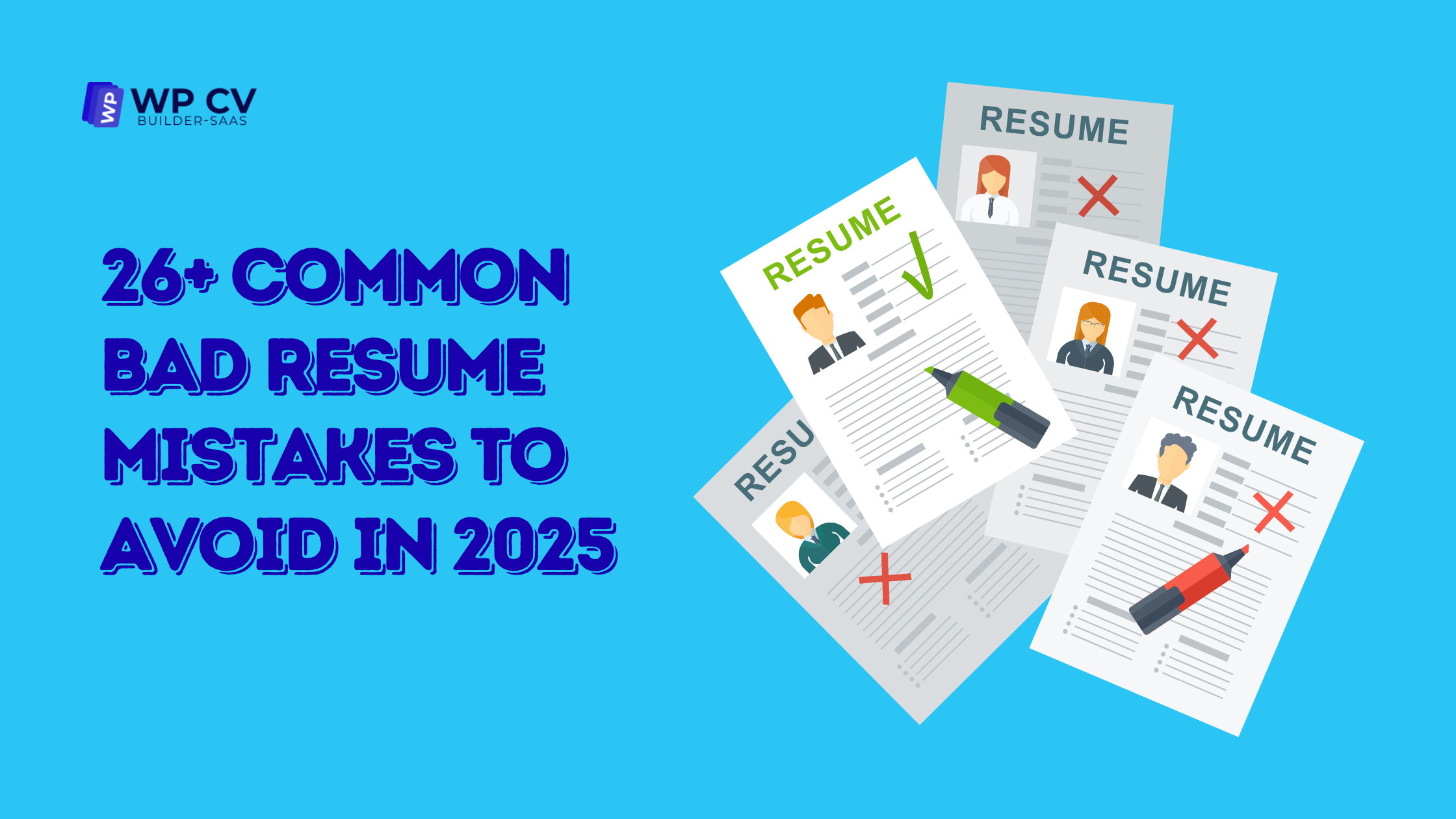
Leave a Reply